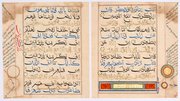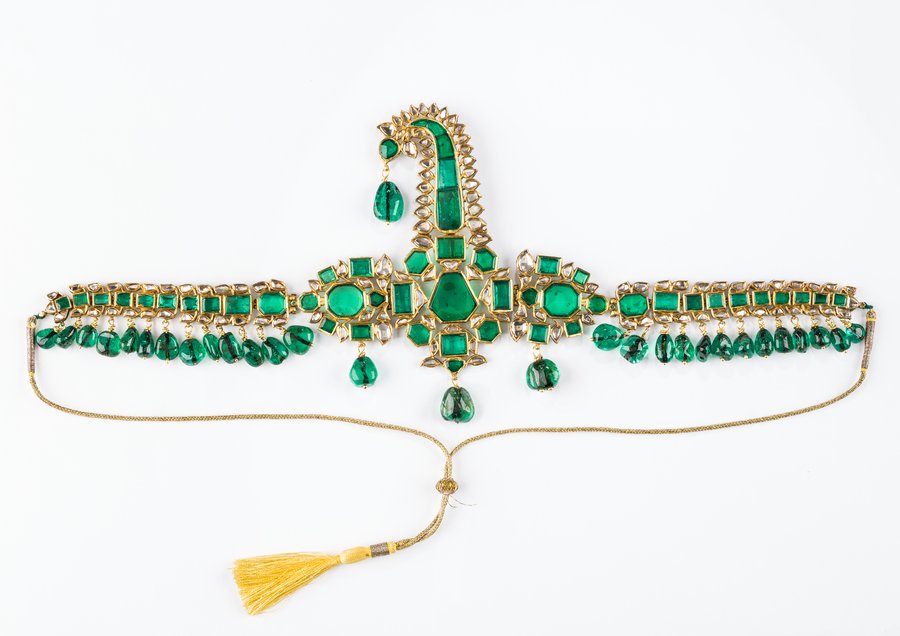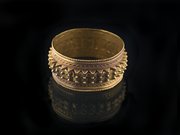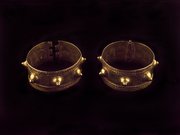
Emerald Turban Ornament (Sarpech)
Museum of Islamic Art
- Title:
- Emerald Turban Ornament (Sarpech)
- Production place:
- India
- Date:
- 1725 - 1767
- Period:
- Mughal
- Title:
- Emerald Turban Ornament (Sarpech)
- Production place:
- India
- Date:
- 1725 - 1767
- Period:
- Mughal
- Material:
- Emerald, Diamond, Enamel, Gold, Silver, Solder, Metallic thread, Silk
- Technique:
- Casting, Chasing, Cutting, Cabochoning, Enamelling, Piercing, Soldering, Braiding
- Dimensions:
- 143 × 380 × 9 mm
This jewelled turban ornament (known as a sarpech) consists of twenty emerald set rectangular panels flanking two floral panels set with alternating emeralds and diamonds. In the middle is a central plume of tapering form curving to the left, decorated en suite with emeralds arranged in descending size. Each set emerald has been thinly sliced to showcase the stone's translucency and brilliance. From each panel a single cabochon-cut emerald is suspended. Turban ornaments such as this formed a vital part of ceremonial Indian dress, and according to Mughal sumptuary laws, could only be worn by royalty, blood relatives of a chief, and honoured individuals. While it is believed that the sarpech derived in form from the 10th century AH/16th century CE jewelled aigrette – a type of ornament that became fashionable in India as a result of European influences – during the 11th-12th century AH/17th and 18th centuries CE it evolved from a single, vertical jewelled plume to an increasingly elaborate, horizontal band. This sarpech is decorated in a manner associated with the Nizams of Hyderabad, in the Deccan. The Nizams were renowned patrons and collectors of fine jewellery, often decorating their sarpeches in a combination of emeralds and diamonds.



